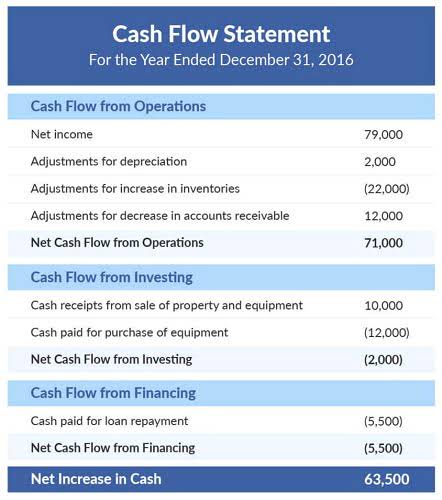Content

The income statement account Bad Debts Expense was affected earlier when the Allowance balance was established or adjusted. In the U.S., the direct write-off method is required for income tax purposes, but is not the method to be used for a company’s financial statements. The entry to write off a bad account depends on whether the company is using the direct write-off method or the allowance method. Bad debt can be reported on the financial statements using the direct write-off method or the allowance method. Bad debt can be reported on financial statements using the direct write-off method or the allowance method. In the direct write off method example above, what happens if the client does end up paying later on?
- For the sake of this example, assume that there was no interest charged to the buyer because of the short-term nature or life of the loan.
- This means that reported losses could appear on the income statement against unrelated revenue, which distorts the balance sheet.
- When you approve a journal entry, you can select a different value than the one initially displayed.
- If you’re a cash method taxpayer , you generally can’t take a bad debt deduction for unpaid salaries, wages, rents, fees, interests, dividends, and similar items.
- The companies that qualify for this exemption, however, are typically small and not major participants in the credit market.
- In some cases, a company might avoid extending credit at all by requiring a buyer to procure a letter of credit to guarantee payment or require prepayment before shipment.
An account that is 90 days overdue is more likely to be unpaid than an account that is 30 days past due. However, the direct write-off method can result in misstating the income between reporting periods if the bad debt journal entry occurred in a different period from the sales entry. For such a reason, it is only permitted when writing off immaterial amounts. The journal entry for the direct write-off method is a debit to bad debt expense and a credit to accounts receivable. Continuing our examination of the balance sheet method, assume that BWW’s end-of-year accounts receivable balance totaled $324,850. This entry assumes a zero balance in Allowance for Doubtful Accounts from the prior period. BWW estimates 15% of its overall accounts receivable will result in bad debt.
Protect Your Business Against Bad Debt Expense
This fall, in turn, meant that the stock would never earn revenues enough to cover its original Balance sheet value. Consequently, RIM took a $485 million write-down on the total book value of the unsold devices. Secondly, the firm credits the same amount to a contra asset account, “Allowance for doubtful accounts.” how to write off bad debt In the first case, debit Bad debts for the gross amount of the debt, including taxes. Credit the asset account where the debt is recorded by the same amount. Write-offs of bad debts do not include credits for return of merchandise, price adjustments for faulty or damaged items, or warranty refunds.
- This report shows all the money owed to you by all customers, how much is owed, and how long each customer’s debt has been outstanding .
- Net receivables are the money owed to a company by its customers minus the money owed that will likely never be paid, often expressed as a percentage.
- Because it is an estimation, it means the exact account that is uncollectible is not yet known.
- The specific percentage will typically increase as the age of the receivable increases, to reflect increasing default risk and decreasing collectibility.
- A write-down also lowers asset book value, but it does not take the value to 0.
In addition, this accounting process prevents the large swings in operating results when uncollectible accounts are written off directly as bad debt expenses. In contrast to the direct write-off method, the allowance method is only an estimation of money that won’t be collected and is based on the entire accounts receivable account. The amount of money written off with the allowance method is estimated through the accounts receivable aging method or the percentage of sales method.
Why Bad Debt Accounting is Important
Your balance sheet would show $20,000 in receivables, offset by the $300 allowance, for a “net accounts receivable” of $19,700. In the direct write off method, there is no contra asset account . As a result, everything in the Account Receivable book will be counted as a current asset on the company or individual’s balance sheet. The allowance method estimates bad debt expense at the end of the fiscal year, setting up a reserve account called allowance for doubtful accounts. Similar to its name, the allowance for doubtful accounts reports a prediction of receivables that are “doubtful” to be paid. Startups and small businesses are advised to set up a bad debt allowance account in advance of issuing credit.

If the following accounting period results in net sales of $80,000, an additional $2,400 is reported in the allowance for doubtful accounts, and $2,400 is recorded in the second period in bad debt expense. The aggregate balance in the allowance for doubtful accounts after these two periods is $5,400. The allowance method is an accounting technique that enables companies to take anticipated losses into consideration in itsfinancial statementsto limit overstatement of potential income. To avoid an account overstatement, a company will estimate how much of its receivables from current period sales that it expects will be delinquent.
What Are the Consequences of Overstating Your Accounts Receivable?
However, theft can also occur as pilferage by shippers, shoplifters, or the company’s employees. Or, write-off can merely refer to an investment of any kind that is now worthless. We’re always producing new content to help businesses understand economic trends and navigate trade uncertainty. In the Account field, enter or select your Bad Debt Expense account. Cam Merritt is a writer and editor specializing in business, personal finance and home design. He has contributed to USA Today, The Des Moines Register and Better Homes and Gardens”publications. Merritt has a journalism degree from Drake University and is pursuing an MBA from the University of Iowa.
Is Bad Debt an Expense or a Loss?
Technically, “bad debt” is classified as an expense. It is reported along with other selling, general, and administrative costs. In either case, bad debt represents a reduction in net income, so in many ways, bad debt has characteristics of both an expense and a loss account.
Bad debt expense is a natural part of any business that extends credit to its customers. Because a small portion of customers will likely end up not being able to pay their bills, a portion of sales or accounts receivable must be ear-marked as bad debt.
